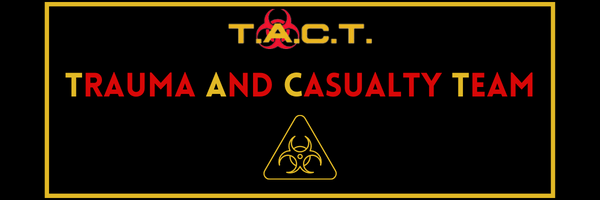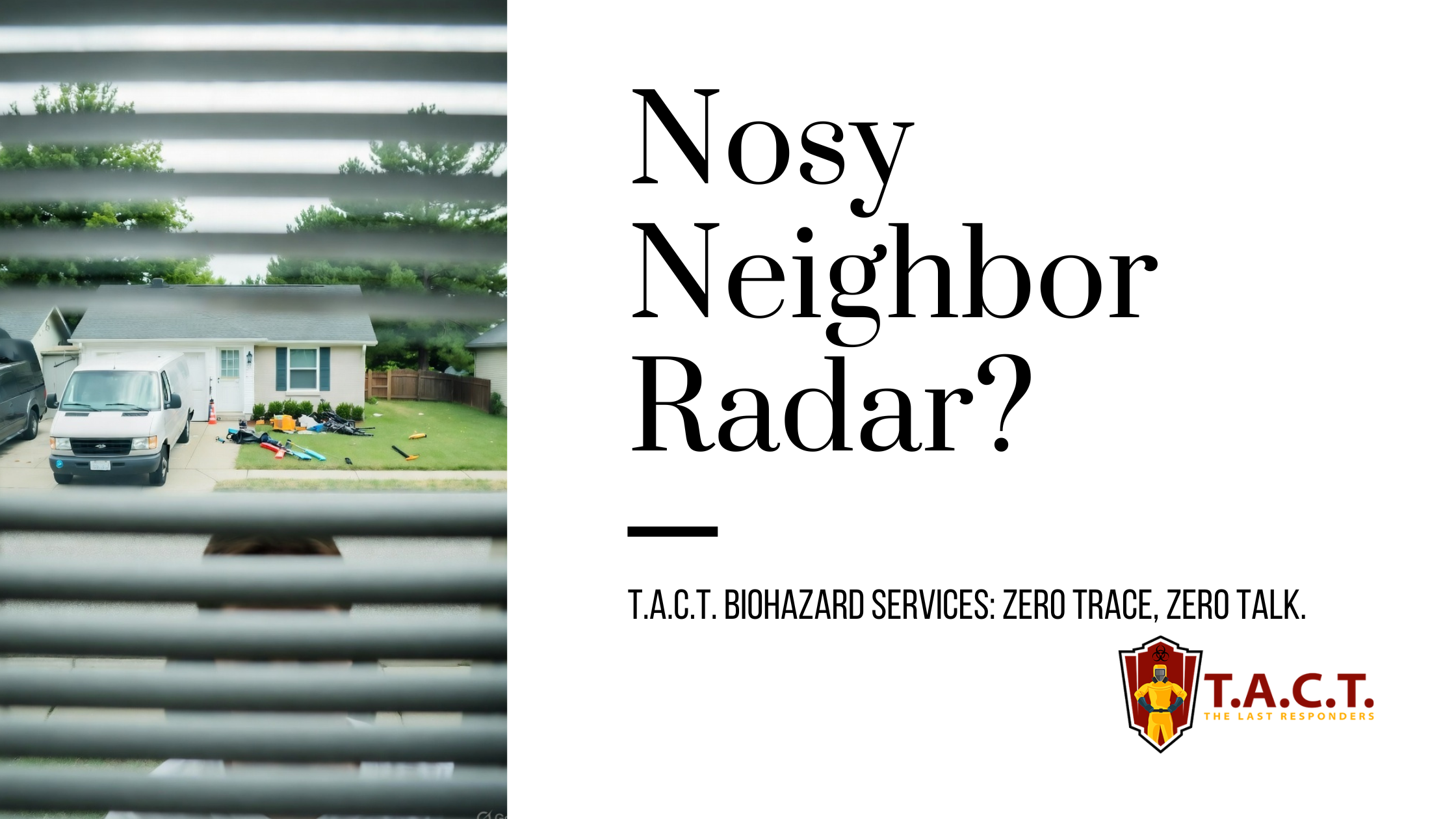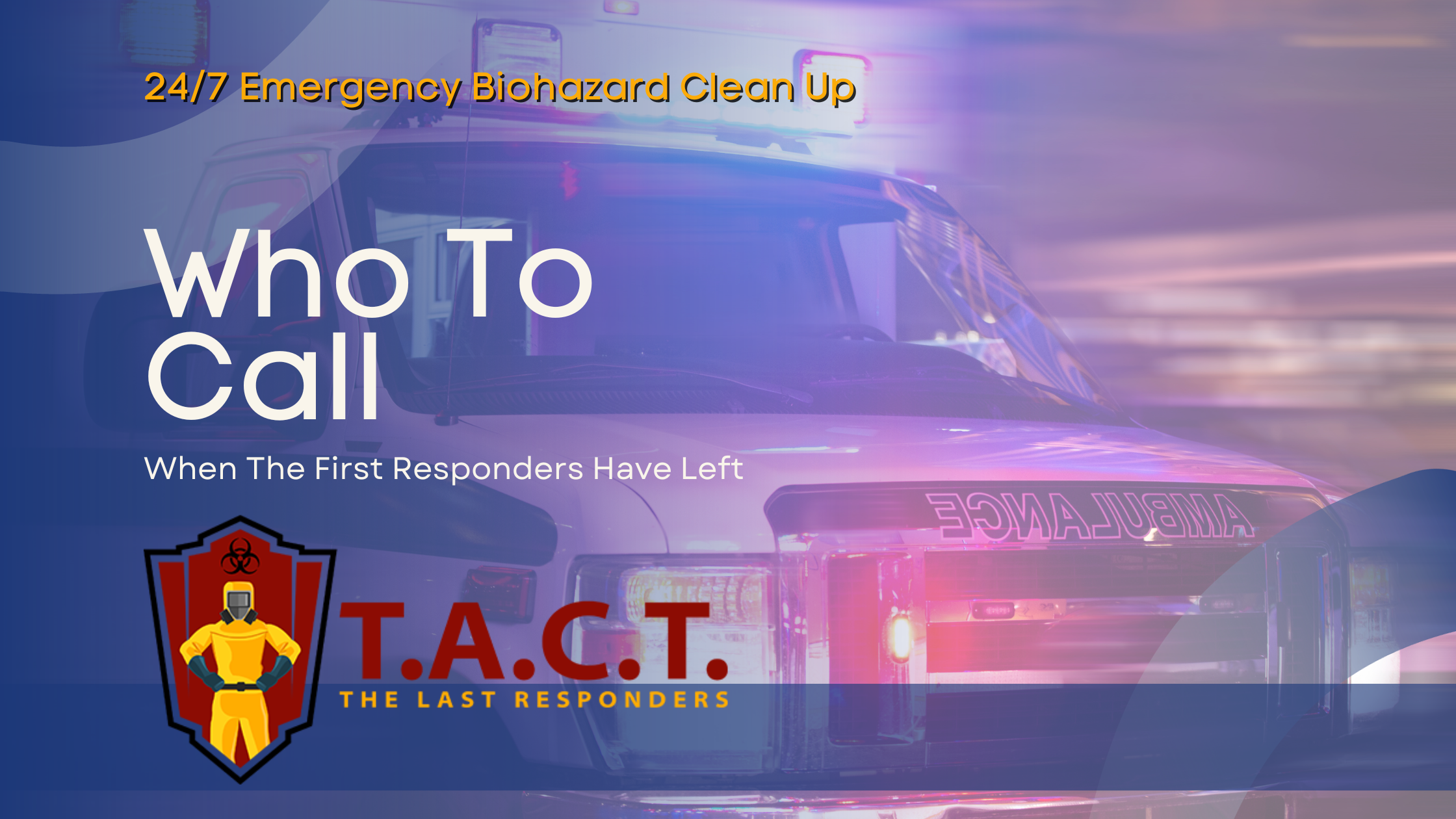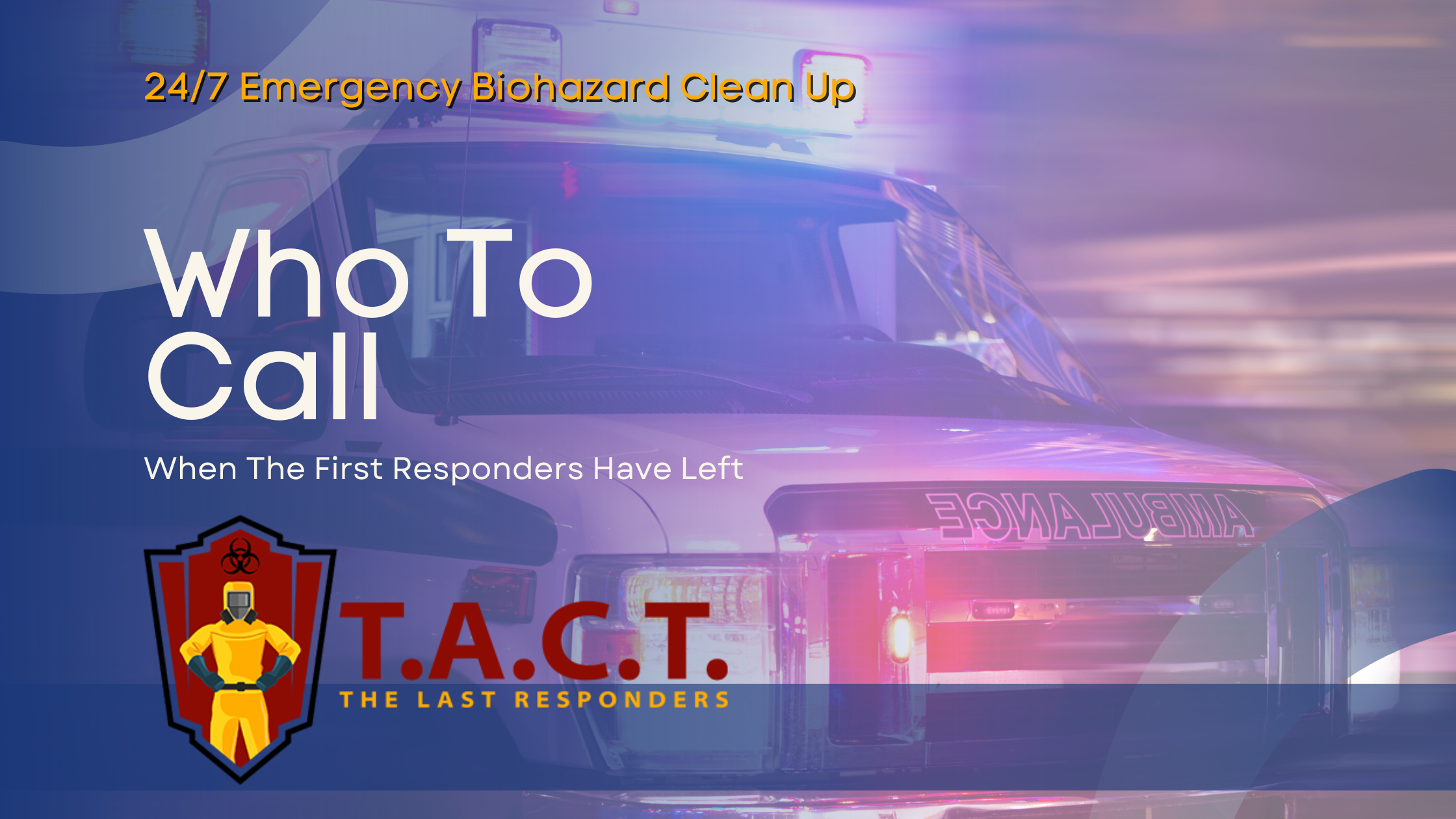Essential Guide to Homicide Cleanup by T.A.C.T. North Atlanta

Essential Guide to Homicide Clean
Dealing with the aftermath of a homicide is one of the most challenging and sensitive situations a property owner or family member can face. When a violent death has occurred, the scene often requires specialized cleanup to address biohazards and ensure proper sanitation. Beyond the emotional toll, there are health risks involved, requiring specialized care to clean and restore the affected area. The grief experienced by those affected can be overwhelming, making it even more important to approach the situation with sensitivity. Homicide cleanup is needed after such a traumatic event has occurred, once authorities have released the scene. This guide aims to shed light on what happens during homicide cleanup, why professional services are crucial, and how processes are implemented to ensure safety and healing.
Understanding the Crime Scene
A crime scene is not just a point of investigation; it’s also an environment with hidden dangers. Crime scenes, especially those involving violent incidents such as murder, often require biohazard cleanup after the event has happened and law enforcement has released the area. Homicides often leave behind biohazards such as bodily fluids, bloodborne pathogens, and other contaminants that pose significant health risks. Cleaning such environments requires more than a mop and soap; it necessitates specialized crime scene cleanup expertise to ensure complete remediation.
Additionally, police and investigators often use fingerprint powder, tear gas, and other chemicals during their efforts to collect evidence. These materials can linger within the property, creating additional layers of complexity in cleanup. Cleanup procedures can only begin after the deceased has been removed from the scene and authorities have completed their investigation.
Understanding the specific conditions of a crime scene is essential to developing an effective action plan. A comprehensive cleanup approach ensures not only the removal of visible remnants but also the elimination of microscopic hazards that could jeopardize safety.
Professional services don’t just prioritize hygiene; they also provide emotional relief. Those affected by the tragedy—people who have lost loved ones or witnessed traumatic events—often carry an immense emotional burden, and delegating the task of cleanup to trained professionals allows for some reprieve during a difficult period while supporting the people impacted by the incident.
The Homicide Cleanup Process
Restoring a crime scene begins after the authorities and investigators finish their work. At this point, the scene is usually released to the property owner or family, allowing a professional company to begin the remediation process. These companies are trained to handle trauma scenes, including the removal of biohazards after accidents, crimes, or deaths. Such incidents can occur multiple times, requiring repeated professional intervention.
Step 1. Thorough Assessment
Trained technicians visit the location to assess the situation. During this assessment, it is crucial to collect detailed information regarding legal, health, safety, and procedural requirements to ensure the cleanup is conducted properly. The primary goal at this stage is to identify all visible and invisible biohazards, as well as note any structural damage or chemical residue left behind.
Step 2. Hazard Identification and Planning
Based on the initial assessment, professionals develop a tailored plan that ensures all risks are addressed. This includes outlining the methods and specific procedures for biohazard removal, disinfection, and deodorization.
Step 3. Cleaning and Disinfection
Once a plan is established, the actual cleaning begins. This involves multiple stages, including:
Removing all biohazardous materials (e.g., blood, bodily fluids, and contaminated items) to ensure complete removal of hazardous substances.
Using hospital-grade disinfectants to kill pathogens and bacteria.
Deodorizing the area to eliminate lingering smells.
During the cleaning process, it is crucial to follow strict protocols to avoid cross-contamination and exposure to hazardous materials. All potentially infectious materials must be treated with caution and professionalism.
The goal is to restore the property not just to a visually clean state but also a scientifically clean condition that guarantees safety for reoccupation.
Step 4. Documentation and Guidance
After cleaning, detailed documentation of the process is provided. Professionals also create comprehensive records and manifests for biohazard disposal, ensuring that all hazardous materials are properly tracked throughout the disposal process to maintain compliance with regulations. Additionally, they guide property owners regarding next steps, such as dealing with insurance claims, structural repairs, or filing necessary reports.
The cleanup process is not just about sanitation; it’s aimed at offering peace of mind. By ensuring every trace of the incident is erased, professionals help those affected begin their path to emotional recovery. They are also prepared to answer any questions about the cleanup process or industry standards.
Biohazard Removal and Safety Protocols
Biohazard removal is one of the most critical components of crime scene cleanup. Cleanup professionals are often faced with hazardous, emotionally taxing, and challenging situations that require strict adherence to safety protocols. Without proper handling, exposure to bloodborne pathogens, bacteria, and other contaminants could result in serious health risks, including diseases like hepatitis or HIV.
Cleanup teams are also working closely with law enforcement and regulatory agencies to ensure all procedures meet legal and safety standards during the remediation process.
Specialized Training and PPE
Technicians involved in remediation undergo extensive safety training to handle hazardous materials. They use personal protective equipment (PPE), which includes gloves, full-body suits, respirators, and face shields, to prevent exposure during the cleanup process.
OSHA Guidelines and Best Practices
Professionals adhere to Occupational Safety and Health Administration (OSHA) guidelines to ensure every task is performed with the highest safety standards. These include methods to minimize exposure, prevent cross-contamination, and properly dispose of all biohazardous waste.
Due to increased awareness and evolving regulatory standards, crime scene cleanup services have been added to the offerings of many restoration companies, expanding their responsibilities within the industry.
Proper Disposal of Biohazards
Materials such as contaminated furniture, flooring, and other porous items are disposed of according to local and federal regulations. Professionals take care to use approved biohazard containers and ensure safe transportation to licensed treatment facilities.
Additionally, the use of hospital-grade disinfectants ensures that all surfaces are sanitized to eliminate any pathogens and ensure a clean, safe environment.
Before the property is returned to normal use, a final clearance is obtained to confirm that all biohazards have been eliminated and the site meets safety standards.
Importance of Professional Services for Crime Scene Cleanup
The tragedy of a homicide creates emotional and logistical challenges. Attempting to handle crime scene cleanup alone is not only emotionally overwhelming but also dangerous and ineffective without the necessary training or tools. Some professional companies offer a free initial assessment or consultation to help families understand their options.
Why Choose Professional Cleanup Services?
Experience and Expertise
Professionals have the knowledge and skill to tackle the complexities of crime scene cleanup. They understand what to look for, how to identify invisible hazards, and how to remediate scenes to the highest standards.
Comprehensive Restoration
Where amateurs may miss biohazards or handle them incorrectly, experts ensure every square inch of the scene is sanitized and restored. This includes addressing both visible and molecular contaminants that pose ongoing risks.
Empathy and Support
Crime scene cleanup companies don’t just clean spaces; they help restore lives. Trained specialists know how to work compassionately, providing much-needed professionalism and support during a difficult time, with a commitment to preserving and respecting life by ensuring a safe, hazard-free environment.
Peace of Mind
Knowing that skilled technicians are managing the cleanup offers reassurance to those affected. This allows families and property owners to focus on healing and taking care of other immediate needs.
By relying on experienced services, you ensure safety, compliance with legal standards, and complete restoration of the affected area.
A Safe and Clean Future Starts Here
Homicide cleanup is a sensitive and specialized service that goes far beyond general cleaning. It requires compassion, professionalism, and expertise to ensure a safe and thorough remediation process. Entrusting this task to skilled professionals allows families to focus on healing while ensuring that the scene is fully restored and safe for reoccupation.
If you're facing the aftermath of an unfortunate event, T.A.C.T. North Atlanta is here to help. Our team is trained to handle the most challenging cleanup situations with empathy and precision. Contact us today to learn more about our services and how we can assist you during this difficult time.
[Contact Us Now]
Meta Data
Meta title
Essential Guide to Homicide Cleanup by T.A.C.T. North Atlanta
Meta description
Learn about crime scene cleanup processes, biohazard safety, and the importance of professional services. Ensuring safety and compassion every step of the way.
Latest news

Nosy neighbors peeking? T.A.C.T. North Atlanta offers discreet biohazard remediation for rodent infestations, mold, hoarding, and more. Unmarked vehicles, quiet experts, full privacy—24/7 service at 470-781-4775.
Read More

